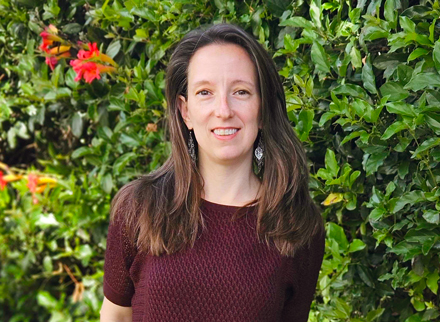
TEF is thrilled to welcome preservation architect Lindsey Moder, AIA, LEED AP BD+C, NCARB, to advance TEF’s preservation practice in all sectors. Formerly of Siegel + Strain, her expertise enhances our core group of preservation specialists, including Principal Andrew Wolfram, AIA, LEED AP, LFA, and Associate Principal Diana Hayton, AIA, LEED AP, NCARB. Currently, Lindsey is completing historic residential hall improvements for a higher education campus. We sat down with her for a Q&A to gain her insights on preservation and joining TEF.
What is the role of preservation in modern development (and the need for carbon positive, resilient, and humane place-making)?
Preservation provides a historical context within which to interpret modern development. I can't make sense of a world where development exists in a void. The history of the built environment tells a story about our changing values, needs, and aesthetics, as well as industrial development; it tells us about who we are and how we got here. Humankind needs a collective memory!
At the ground level, historic preservation works to provide humane, inclusive, and experience-focused places. Exact adherence to the Secretary of the Interior's Standards is less important than the quality of the space and the story it tells. Successful preservation distills down the essence of a place and interprets that story for a larger audience.
How has preservation changed over the course of your career?
The general awareness of historic preservation and its inherent values, particularly in regard to sustainability, has greatly increased in the last few decades. Find me an architect who doesn't instinctually quote Carl Elefante when talking about existing buildings: "The greenest building is the one that already exists." This simple idea has really taken hold in the architectural community. Going further, the research and language around embodied carbon have elevated the discussion to a whole new level of understanding. I'm excited to see this conversation continue to unfold and how preservation policies and thinking adapt to stay relevant in our rapidly changing world.
Another inspiration for me is the movement towards a more inclusive preservation practice that embraces history from a broader cultural perspective. The work in San Francisco on expansive historic context statements has been particularly inspiring, and the National Trust's efforts to highlight, uplift, and fund stories of under-represented communities is crucial. Similarly, the consideration of intangible cultural heritage—such as folklore, customs, knowledge, and language—is fascinating, though I acknowledge I still have much to learn in this area.
What excites you most about being at TEF?
The breadth of expertise among staff at TEF is very inspiring. I love working at such a dynamic place, where people bring a wide range of experiences, perspectives and expertise, and where knowledge is shared openly and often.
Quickfire